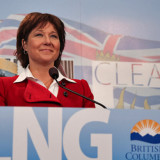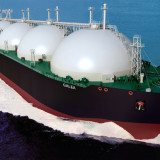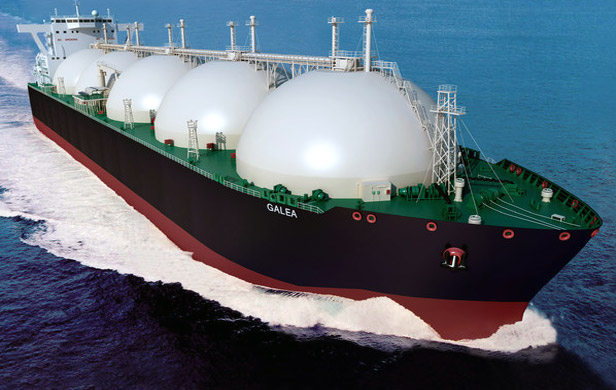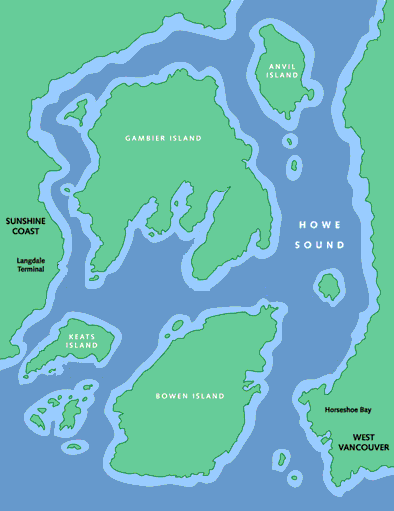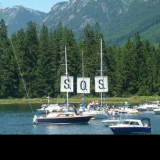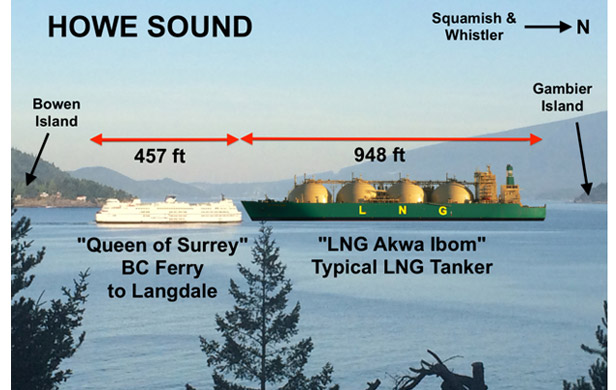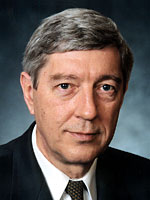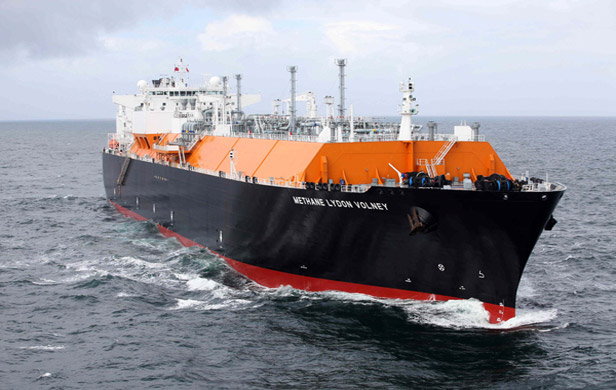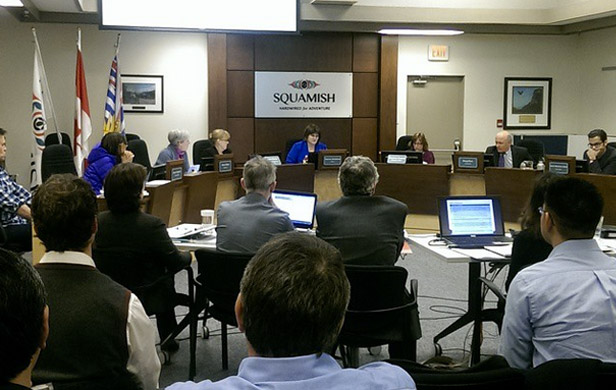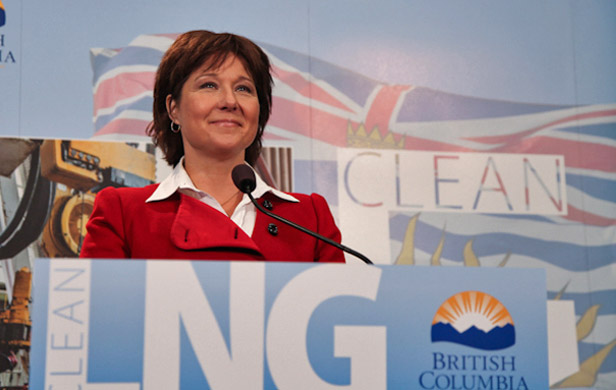
The Vancouver Sun – rapidly becoming, if it hasn’t already become the “Pravda” of Vancouver – has done it again with another article supporting LNG and the proposed Squamish plant. This one is by a father and daughter combination and they come to what to me, at any rate, is an amazing conclusion.
LNG would help the climate? Puh-leeze!
If you just read the headline you would assume that this story has British Columbia saving the world from atmospheric pollution and global warming if it just starts to produce more natural gas. If you work your way through the article – and it’s pretty crappy – you’ll see that their point is that natural gas is not as bad as coal or oil. They conclude by suggesting that it would be a very good thing if British Columbia would produce more LNG and, of course, built an LNG facility in Squamish.
Here is the reasoning as I understand it:
If BC “fracks” away, pollutes the ground and the water around it, uses water that is needed elsewhere, dumps chemical-laden water into the water table, further pollutes the air by extracting the natural gas and releasing massively climate-damaging fugitive methane emissions, pipes it dangerously to Squamish, uses enormous amounts of energy to convert it to LNG, then puts it on tankers which by the most conservative estimates will cause great risk to Howe Sound; it’s then taken to, say, China, and is burned causing more pollution into the atmosphere – that this is a very good thing that British Columbia is doing to save the atmosphere and lessen global warming. Hooray for us!
If on the other hand, we leave it in the ground, that would be a very bad thing for the environment. Like, Wow!
Does anybody believe this stuff?
I’m quite happy to have the Podtmedia papers falling all over themselves to kiss Harper and Clark’s backsides and support their undying love for fossil fuels in all forms – the reason being that nobody believes these papers anymore, so shrill have they become. They seem not only unwilling but unable to present the other side of the story and so far as I am aware don’t even report the extremely active goings-on of those who oppose LNG and the Squamish facility.
Sometimes it takes a while but eventually people notice this. They know that there are an awful lot of very intelligent people, not all of the left, who are opposed to LNG generally and the Squamish facility specifically and that that number is growing. When they don’t see that mentioned in either of the Vancouver papers, they conclude that the Vancouver papers are stuck in a right-wing time warp.
Harcourt joins Team LNG
I’ve always felt that in political debates it’s more important as to who your enemies are than your friends. To have Postmedia as an enemy is infinitely better than having them as a friend.
The same can be said for Mike Harcourt, who has jumped into the fray on behalf of Woodfibre LNG and their ventriloquist dummy, Resource Works. This latter organization has poured out such atrocious untruths that they have instantly become, at least in the Sea-to-Sky and Squamish communities, utterly unbelievable.
Mr. Harcourt, who was a mediocrity as mayor of Vancouver and an utter failure as Premier – his inability to run a government destroying his political party in the bargain – is talking a lot of nonsense about rigorous environmental proceedings and public process.
It is amazing to me that people like Harcourt still believe that if you tell a big enough fib, people will believe it. That may have been true at one time but it’s not anymore.
The public isn’t stupid
People in our community have seen and heard what happens at the National Energy Board or any one of the numerous environmental assessment proceedings and know that these are fixed, are essentially blowjobs for industry and do handstands to avoid letting the public have a proper say or cross-examine the experts.
There is one area of inquiry that Postmedia, Mr. Harcourt, the governments and fossil fuel proponents have avoided like the plague, and it’s critically important.
LNG tanker risks ignored
As has appeared in these pages several times, LNG tanker traffic in Howe Sound is far too dangerous to even contemplate. The most conservative of the American experts is Dr. Mike Hightower of Albuquerque, New Mexico, whose standards have been accepted by the US government.
Taking his measurements as to how far tankers must be from land and from other vessels, there is no way in God’s green earth that Howe Sound is suitable for LNG tanker traffic. Dr. Hightower is considered very conservative in this area and the middle-of-the-road expertise suggests it’s far more dangerous.
Surely we must all ask ourselves why this issue has not been thoroughly canvassed Postmedia, Resource Works, senior governments, Mike Harcourt, and others. What are they afraid of?
The answer to that question is simple – the truth. The possibility that Environmentalists, of all people, might be right on something is too much for them to stomach.
Concerns justified
Well, I’m here to tell you, on this issue especially we are right. There is no quarrel with that from anyone who knows anything about this issue.
In fact, my story in these pages so shook Woodfibre LNG that the president called an emergency meeting on a Saturday to announce that another route would be pursued. As you read here, Commander Roger Sweeny (RCN Ret), an expert on these matters and a lifelong landowner in Howe Sound, quickly concluded that this alternative was far, far worse than the original!
This obviously accounts for the fact that Woodfibre LNG and Resource Works have been struck dumb ever since.
I consider myself very fortunate to be able to use these pages, from time to time, to bring to you these facts so unpleasant to Woodfibre LNG, their high paid truth-benders, their captive politicians and pliable press that they dare not even mention them.
If I may say so, we are all very fortunate to have these pages to read after gagging on at the rubbish published by Woodfibre LNG and their acolytes.
 LNG (Liquified Natural Gas) is one of biggest energy stories to hit Western Canada. It is promoted as a clean bridge fuel that will create thousands of jobs and turn British Columbia into a trillion-dollar global energy leader. The idea is to cool natural gas into liquid, so it can be shipped to higher-price markets in Asia. But is it really all it’s cracked up to be? And what are the trade-offs and impacts associated with LNG and the fracked gas that would feed it?
LNG (Liquified Natural Gas) is one of biggest energy stories to hit Western Canada. It is promoted as a clean bridge fuel that will create thousands of jobs and turn British Columbia into a trillion-dollar global energy leader. The idea is to cool natural gas into liquid, so it can be shipped to higher-price markets in Asia. But is it really all it’s cracked up to be? And what are the trade-offs and impacts associated with LNG and the fracked gas that would feed it?